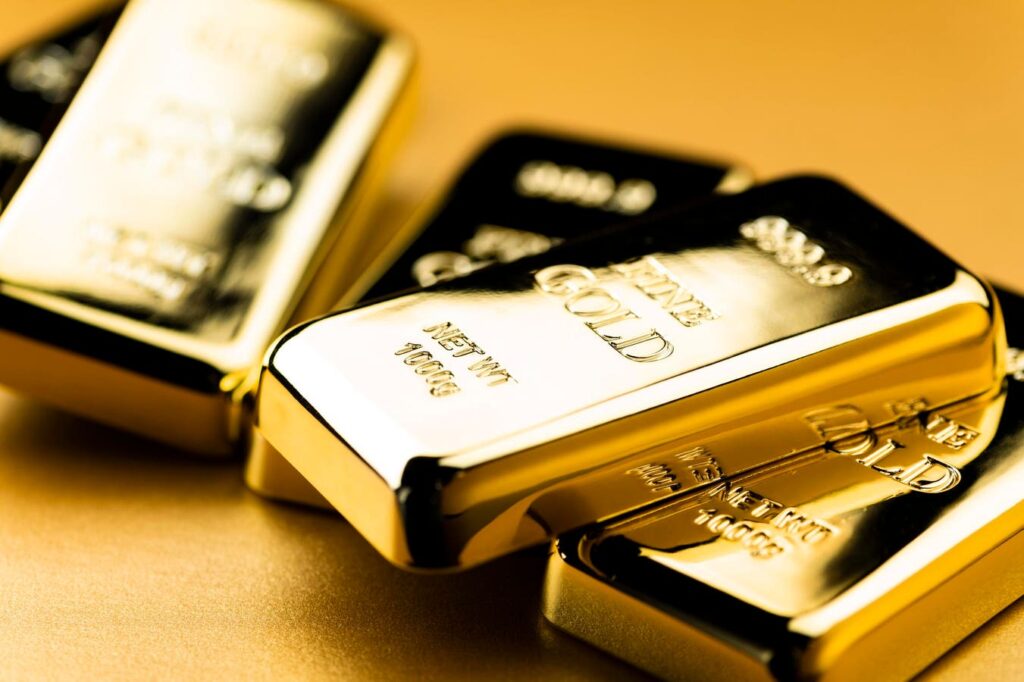At my CEF Insider service, we focus on the long term, picking up closed-end funds that give us the capital we need to grow our wealth, plus the high income (I’m talking 8%+ yields here) we need to gain—and keep!—our financial freedom.
That said, there’s no denying that one particular investment (that’s known for neither income nor long-term wealth building!) is getting a lot of attention these days: gold.
So let’s talk about the yellow metal and why we’ve avoided it at CEF Insider, despite its recent rise. We’ll also look at a closed-end fund (CEF) that looks like a good play on gold but is, in fact, far from it. (Either way, it’s a fund I recommend selling now, if you hold it, or avoiding if you don’t).
Gold: Not a Long-Term Wealth Builder, and a “Coin Flip” in the Short Term
You don’t have to look too far to see why gold is more of a play for short-term traders.
We only have to go back five years to see gold underperforming the S&P 500, even after the recent selloff in stocks. But let’s look at the really long term here.
If we go back 33 years (the longest I can go back easily with the software I’m using), you again see that a significant gold holding would be a significant drag on a portfolio.
If you are trying to build generational wealth, clearly gold is not the way to go.
If you’re looking to play short-term extreme price moves? Then gold can work, but it’s often no better than a coin flip. Here’s why.
Here we see a few years in the 1970s, when gold (in blue above) crushed the S&P 500 (in red). But since then, the years in which gold has beaten stocks have been rarer. In fact, since 1971, gold has topped stocks 23 times, and stocks have beaten gold 31 times.
And if you’re interested in the long term, this is the real takeaway: Over this period, gold gave investors a 10.8% average return per year, while stocks returned an average of 12.5%.
That’s not too much of a difference. But take out the 1970s and gold gave investors a 4.3% annualized return while stocks returned 13.2% annualized return. That’s a massive difference and a clear sign that gold is very much not for the long term.
My Call: Sell This 8.4%-Yielding “Gold” CEF Now
Which brings me to that so-called “gold” CEF I recommend selling now: the GAMCO Global Gold, Natural Resources & Income Trust (GGN).
GGN is a good fund, and well managed, but its focus on gold will inevitably drag it down when gold’s rally inevitably stumbles—which is why I see it as a sell now. This one is also not a “pure” gold play: It holds 54% of its portfolio in metals and mining stocks, including notable gold names like Newmont Corp. (NEM) and Kinross Gold (KGC). But it also has miners of other minerals, like Rio Tinto (RIO)—mainly an iron ore miner—and BHP Group (BHP), which focuses mostly on iron ore and copper.
Another 33% of GGN’s holdings are in energy and energy-services stocks, including top-10 holdings Exxon Mobil (XOM) and Chevron (CVX). That energy focus has been weighing on GGN, since oil has been tumbling with stocks as of late.
Nonetheless, investors have been bidding up the fund, shrinking the fund’s discount to net asset value (NAV, or the value of its underlying holdings) down close to par.
The fund’s discount has been shrinking for years after temporarily spiking in mid-2022, during that year’s selloff. That’s left its current discount near its 10-year average of 3%. In other words, this fund is no longer undervalued, so it risks seeing less demand from investors going forward.
This doesn’t mean GGN is always a sell, by the way. Buying it on October 1, 2022, near the depths of that year’s stock-market pullback, would have been a good move: GGN (in purple below) trounced gold prices—shown by a benchmark index fund, the SPDR Gold Shares (GLD), in orange, and an S&P 500 index fund (in blue) from then until the end of that year:
Since then, though, the story has been very different.
As you can see above, GGN is well behind the S&P 500 since then, and more or less on par with gold.
The fund’s “tie” with gold since brings up another question, though: Why not just buy gold itself? Well, gold has no dividend, so if you want to use your profits, you’ll need to know how to time gold’s ups and downs in order to sell at the right times to get the cash you need.
With GGN, you’re at least getting an 8.4% payout. The fund’s high dividend effectively turned the volatility in the fund’s gold and resources holdings into usable income for investors who held it.
What’s more, with gold itself—or an ETF that tracks it, like GLD, you will have to be very right about gold in the short term because gold tends to underperform stocks. And since gold has had an unusually strong run as of late, the law of mean reversion suggests that the chances of a bullish bet on gold turning sour are more likely now than they were a few weeks ago.
All of this basically leaves us back where we started: If you’re in the market for a reliable income stream to provide long-term wealth without the stress of gambling on short-term moves in an unpredictable commodity, you’re best to look elsewhere.
Michael Foster is the Lead Research Analyst for Contrarian Outlook. For more great income ideas, click here for our latest report “Indestructible Income: 5 Bargain Funds with Steady 8.6% Dividends.”
Disclosure: none
Read the full article here

